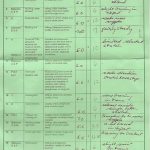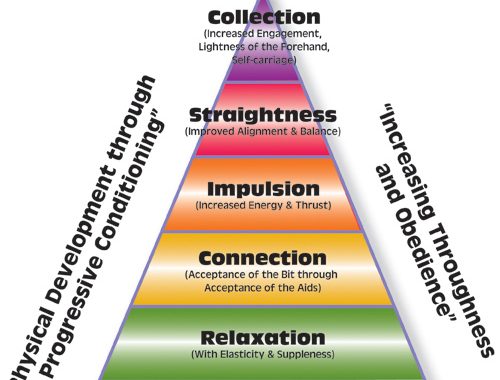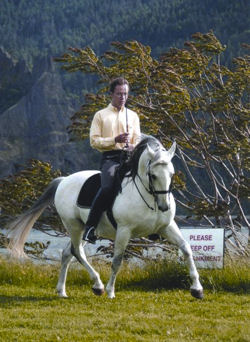Dressage Scores and Their Meaning
D ressage tests serve as a measure of the horse and rider’s schooling. Each level builds upon the preceding level’s principles. A horse and rider should not consider progressing to the next level until sufficient mastery of the current level is demonstrated by attaining a 60% or better dressage score in all areas. This helps to ensure that the horse and rider build the strong foundation required for the skills needed at higher levels.
ressage tests serve as a measure of the horse and rider’s schooling. Each level builds upon the preceding level’s principles. A horse and rider should not consider progressing to the next level until sufficient mastery of the current level is demonstrated by attaining a 60% or better dressage score in all areas. This helps to ensure that the horse and rider build the strong foundation required for the skills needed at higher levels.
Dressage Scores – What Do They Mean?
The overall dressage score is comprised of individual movements scores, as well as collective marks. Coefficients are also applied to add an element of importance to certain movements. Scores are calculated using a 0-10 scoring scale, which is broken down as follows:
| 0 – Not Executed | 6 – Satisfactory |
| 1 – Very Bad | 7 – Fairly good |
| 2 – Bad | 8 – Good |
| 3 – Fairly Bad | 9 – Very Good |
| 4 – Insufficient | 10 – Excellent |
| 5 – Sufficient |
A score of “0” on a given movement means that practically nothing of the required movement had been performed. In addition to the scores shown above, difficult and/or infrequent movements are weighted by coefficients to illustrate the important of these movements.
Dressage Scores – Collective Marks
Collective marks are given after the rider has completes his/her test. These marks are also based on the 0-10 scoring scale and are based upon gaits, impulsion, submission and the rider’s position and seat. These marks are also given a coefficient, since these areas represent the natural and training ability of the horse and rider combined. The following describes each element:
Gaits: the freedom and regularity of the horse’s movement.
Impulsion: the horse’s desire to move forward, elasticity of steps, roundness.
Submission: the horse’s attention and confidence. Harmony with rider, lightness of movements and acceptance of the bit.
Rider’s seat and position: correctness and effect of aids.
Because of the pyramid style training structure used in dressage, it is imperative that each level of dressage is performed at least at a “satisfactory” level before moving on to the next level. Inadequate preparation at lower levels can result in a decreased level of performance and possible injury to the horse when attempting to perform upper level movements. Receiving poor marks on a dressage test can be disheartening to the rider because of the time and effort put into preparing for a dressage test; however, these scores should be taken as encouragement. The judge’s role in relaying dressage scores is to help the rider to learn which areas to work on and which areas they have performed well. Their score is also only a reflection of your performance on that given day. Take their comments as a method for improving your foundation and ultimate success in the sport of dressage. The judge does not want to see horses and riders fail, but rather see horse and rider teams achieve their desired level of success, as well as maintaining the integrity of the sport.
To learn more about what the judges are looking for and what is required at each dressage level, view the following links:
| Dressage Levels | Dressage Terminology |
| Introductory Level | Halt |
| Training Level | Walk |
| First Level | Trot |
| Second Level | Canter |
| Third Level | Passage |
| Fourth Level | Piaffe |
| Prix St. Georges | Half Pass |
| Intermedaire I and Intermedaire II | Pirouettes |
| Grand Prix | Rein Back |
Author: Dressage Academy
You May Also Like

The Not-So-Secret, Secret Dressage Training Formula Article
December 31, 2017
Long and Low – The Foundation of All Good Dressage Training
October 25, 2017
